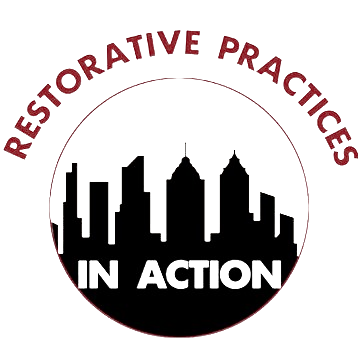DATE
June 30, 2025
AUTHOR
Victoria Rodriguez
CATEGORIES
Restorative Practices
SHARE
What makes the implementation of restorative practices invaluable to educators? There is not a “one size fits all” formula that exists! The RPIA team works alongside educators to ensure that our programming is just as much inclusive as it is effective – addressing the needs of all students. One specific way we have done that is by collaborating with Special Education Teachers across three out of five cohorts during the 2022 – 2023 school year. Currently, we work with two Teachers of the Visually Impaired in the Philly Cohort, as well as three other teachers who teach Learning Support and Autistic/ Emotional Support in the Phoenixville Area School District (PASD) Cohort and Neubauer Cohort. Throughout the fall, these teachers collaborated with their RPIA coaches, while using theory and inspiration from the book “Restorative Practices and Special Needs,” to begin the development of classroom-based culture plans and individually tailored restorative practices that would be differentiated and individualized as necessary. Since that point, our Special Educators have engaged in exceptional work throughout the year, and seen impactful and consistent change in their classrooms. When asked to reflect upon the following question: “How has student voice, ownership, and/or empowerment developed in your classroom this school year?” we see similar trends in qualitative data across multiple special education classrooms based on their feedback.
PASD Autistic/Emotional Support Teacher, Gabby Meister and PASD Learning Support Teacher, Stacie Hallinan used a collaborative approach to researching and implementing their restorative practice strategy: “Teach A Lesson to the Class!” Gabby reflects, “Through academic ownership, students were extremely eager to take the initiative in leading their own learning and genuinely enjoyed it. Students also are not afraid to express how they feel and ask for what they prefer.” Gabby developed and implemented a monthly culture plan throughout the school year in which each student began teaching parts of the vocabulary lesson to the rest of their class. The students had a choice (and ownership) in which words they wanted to teach. This restorative practice has proven to create sustainable impact on her students’ ability to take ownership of the content they are responsible for learning, and “genuinely enjoy it.” Gabby also shared, “I’ll let students take more lead in their learning more often now.”
Stacie, sharing in this restorative initiative, talks about how she has worked to increase student empowerment and voice in her special education classroom. Stacie began asking her students to teach select mini lessons to the class. Stacie empowered her students to have ownership of the “how” these lessons were implemented. Stacie reflects on the overall effectiveness of implementing this strategy consistently in her classroom: “As a special education teacher, I was worried about the level of independence a task like this may take. I worried about the possible anxieties this may cause a population of our students. I worried that this could be a flop of a lesson. I was proved wrong. The students strived and felt empowered and increased their self-confidence. While it is not something that can always be implemented at this level, student voice and empowerment is even more crucial to a population of students who do not get much choice in their learning. Some students were natural leaders, while others showed their leadership in different ways. It was amazing to see the collaboration and the approaches each group took to teach their peers.” Stacie and Gabby shared how one student (Maria) was particularly impacted. Maria had asked after the initial lesson, “When will we be doing this again?” She was very eager and excited to have the opportunity to do vocabulary with Ms. Meister and do a group work student led project with Ms. Hallinan.
Stacie wrote: “It was clear how powerful strategies can become with intent.”
Special Educator at New Foundations Charter School, Brian Dever, shares a powerful story about one student who has been impacted by RPIA this school year, both restoring his own relationship with school as well as student to student relationships. “I have one student in particular that has really benefited from some of the restorative strategies implemented within the past year. He was a student who has always struggled academically and was not very motivated. When creating more opportunities for student voice, so he had more of an active role in his learning, he started to make great progress with his reading abilities. From that came the empowerment he needed to participate more and be more vocal in the classroom. He even started to help with some new students that were struggling in a way that he once had. His confidence in his abilities has grown tremendously.“
As a special educator myself, I think back to the years I spent in the classroom teaching high school functional academics at a school for students who are blind and visually impaired. I constantly challenged myself to create learning environments for my students that gave them voice and choice in how they were accessing information throughout their day. I felt that the students I was working with at the time already had so many components of life that were out of their control. I used to ask myself the questions: “How can I empower and enhance their independence? (Even if in the smallest way)” “How can I support and facilitate the development of my students’ self- advocacy skills to ensure their voice is prevalent?” After a year working in my role as the RPIA Director of Program, and working alongside such incredible special educators, I realize that the strategies I was striving to implore in my classroom were restorative practices. I feel hope when I think about the learning partnerships I had with my students, and that just maybe – I helped to restore opportunities they didn’t know were possible!


